Progress report for FS22-342
Project Information
Our Approach
We propose to reduce materials cost, labor cost, and tree mortality by replacing conventional “landscaping” materials and maintenance activities with the “pasture-focused” materials and activities regularly employed by livestock producers in the Southeast.
Specifically, we propose to replace compost, mulch, gravel, ongoing watering, and mowing with “living mulch,” (i.e. cover crops), “bramble” deterrents, adjustable polywire fencing, and carefully executed grazing management. We estimate that we can reduce expenses per planted tree by 30-50%.
Living Mulch
Many efforts to establish trees utilize mulch and/or ongoing mowing or spraying, to suppress weed competition. We will test the viability of using cover crops as a “living mulch” alternative. Cover crops have been shown to reduce weed competition, conserve moisture, and benefit soil health (1). We hypothesize that cover crops are an effective and affordable solution to weed suppression. Furthermore, by supporting tree health and drought tolerance, living mulch may reduce tree mortality from non-browsing causes.
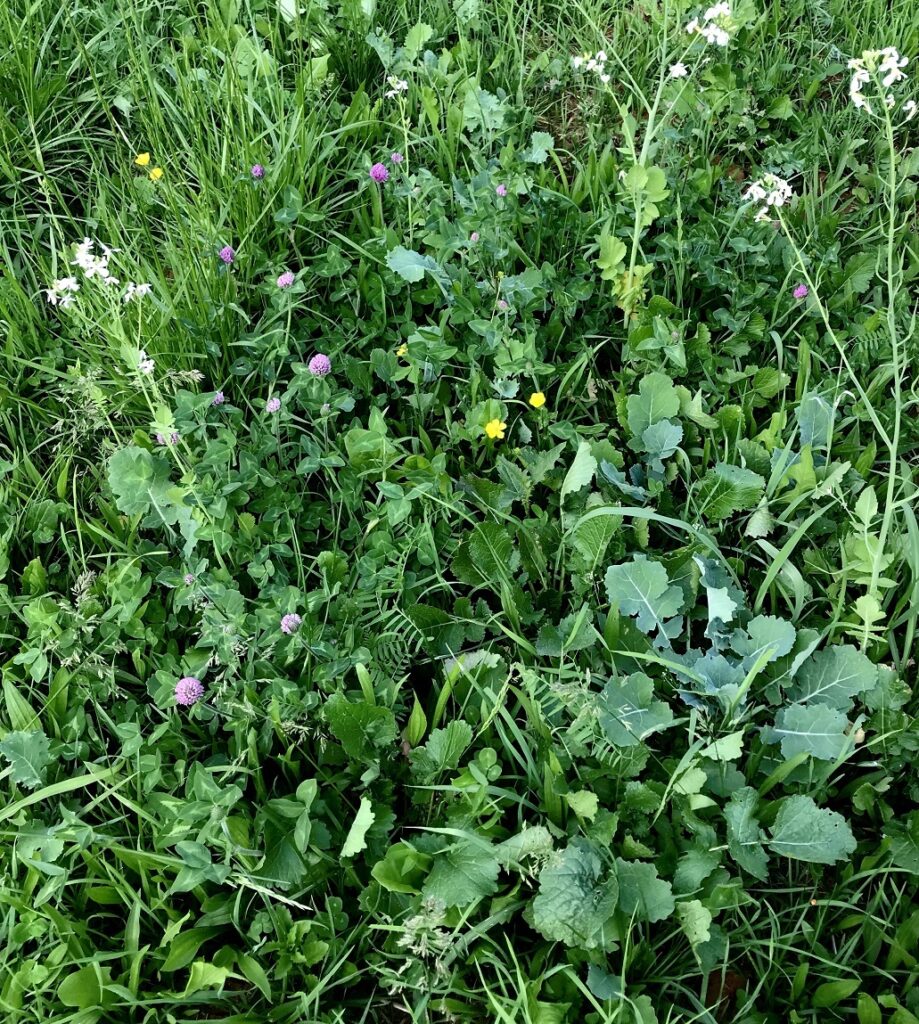
Plant Browsing Deterrents: “Brambles”
In recent years, conservationists in the UK have concluded that using “brambles” (Rubus spp.) to naturally regenerate forests is a more cost-effective afforestation strategy than traditional tree-planting (2). These “brambles” are early succession natives with thorns that deter herbivory. They provide saplings protection, only to be shaded out later as those saplings mature. A similar concept was tested in a silvopasture application in SARE # FNE19-939, “Tree Regeneration and Establishment Strategies in Silvopasture and Sugarbush Systems.” However, this case study took place in a woodland context, and trees were planted into existing invasive species (Japanese barberry, Multiflora Rose).
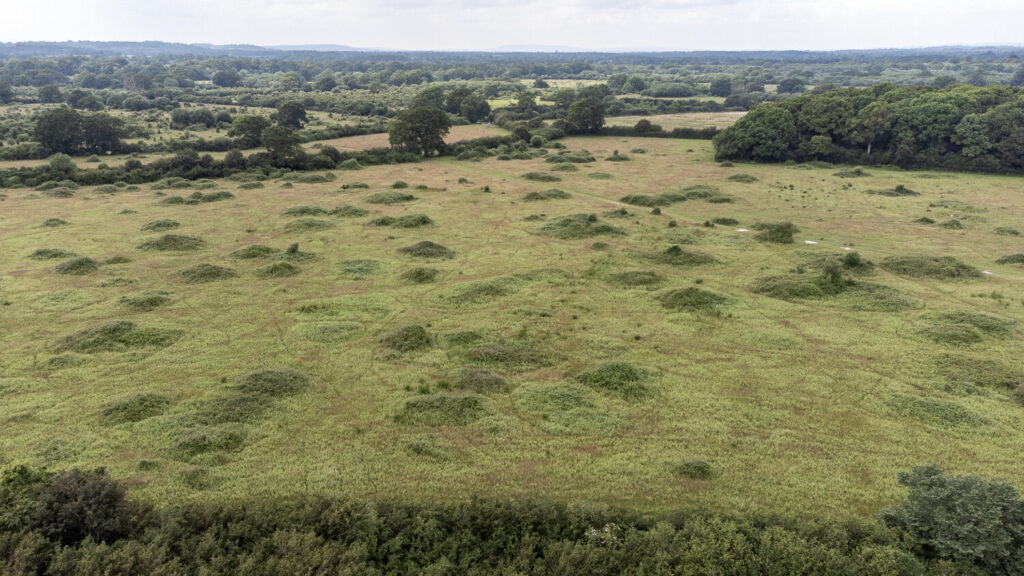
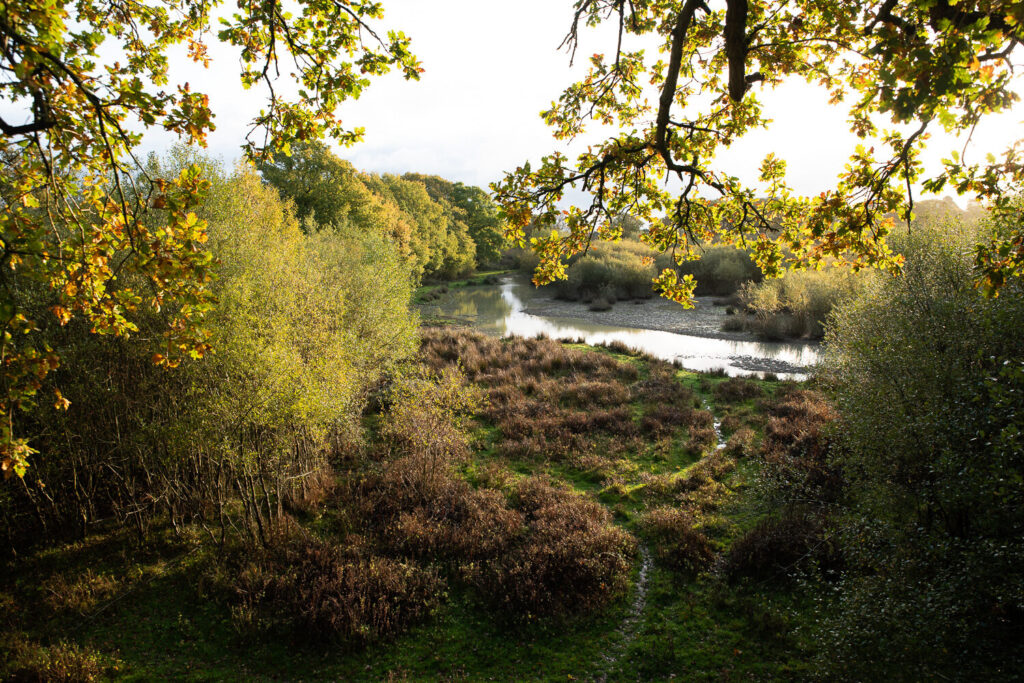
We propose to test this concept out with native species, in new silvopasture establishment, into existing pasture. We will use three native species of “plant deterrent” (PD) -- that is, a thorned woody plant (e.g. Rubus spp., Aralia spinosa, Crataegus sp., or Gleditsia triacanthos, pending availability). These will be planted as cuttings around the target silvopasture tree species (see Methods for target silvopasture species) and initially protected by polywire fencing. We will compare the “PD” method to the methods recommended as most cost-effective by prior research: plastic tubes, plastic tubes + polywire fencing, and fencing alone (3, 4). We hypothesize that PDs may be as effective as other deterrent methods and/or may be less expensive to obtain and install on a large scale. They may also allow one to avoid the well-documented performance pitfalls and environmental downsides documented by others (5).
Please note, PDs are NOT permanent farm improvements, as they are early successional species and will not persist over time. They are being planted as cuttings and used here only as trials for deterrent methods. Target silvopasture trees ARE considered permanent improvements, and will not be included in the budget. (See Methods.)
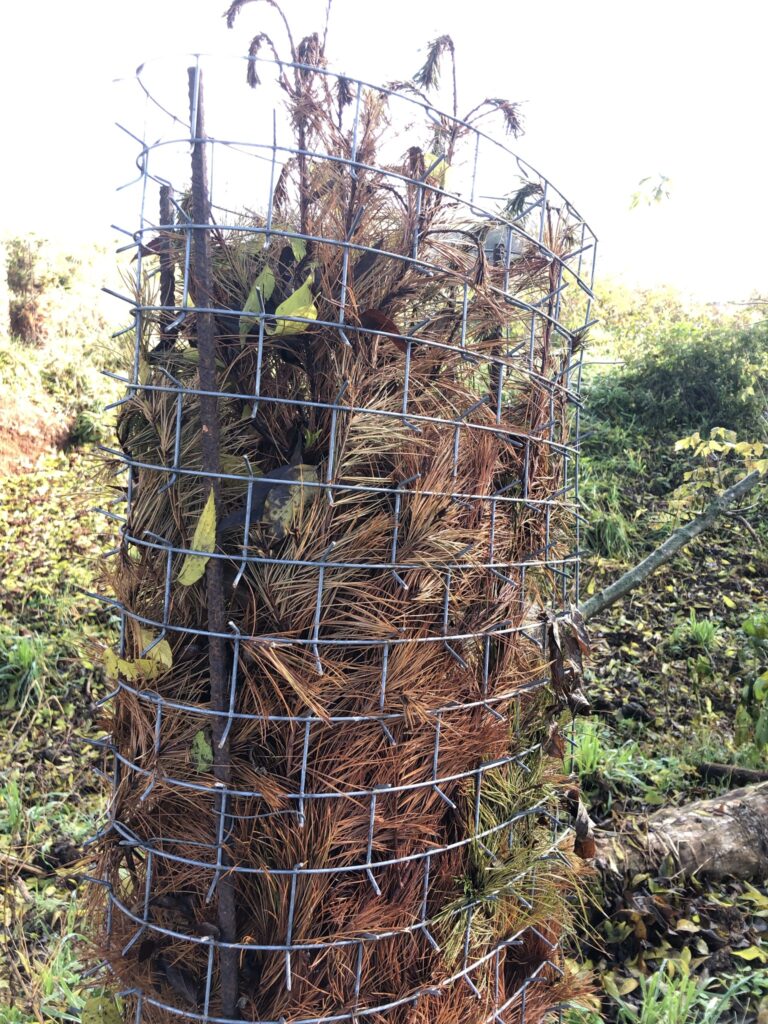
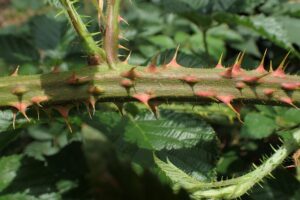
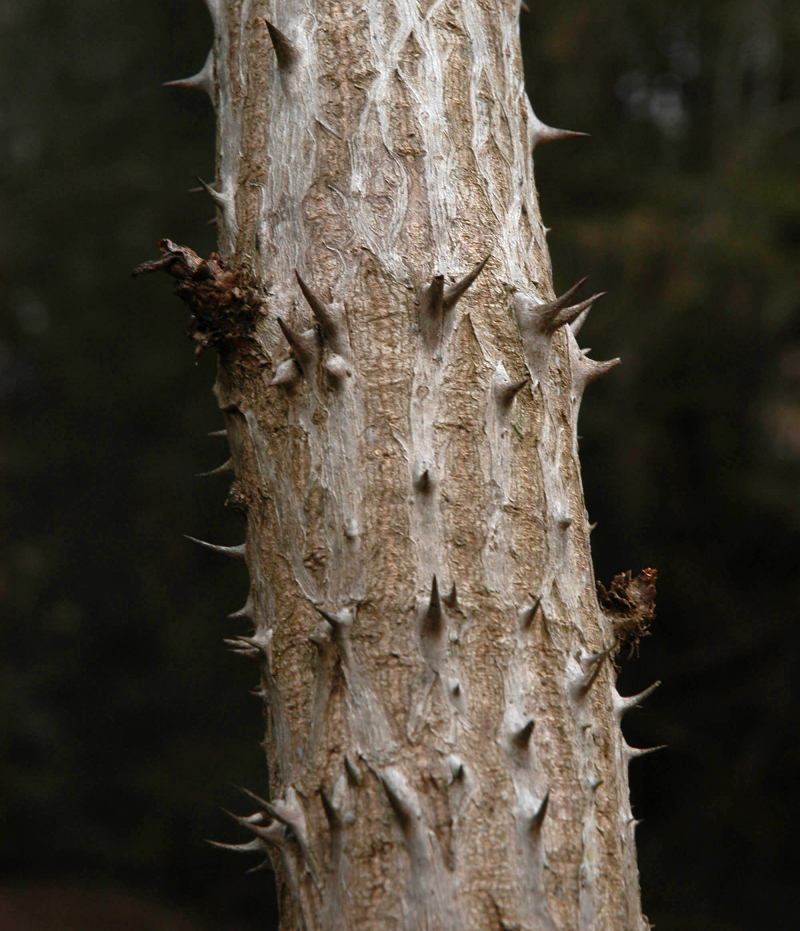
(1) https://www.nrcs.usda.gov/wps/portal/nrcs/detail/ny/technical/?cid=nrcs144p2_027252
(2) https://www.bbc.com/future/article/20210524-the-reason-wild-forests-beat-plantations
(3) SARE Project #ONC16-017, Savanna Institute, 2019.
(4) SARE Project # LNE20-405R, Chesapeake Bay Foundation, ongoing.
(5) https://www.sciencedirect.com/science/article/abs/pii/S0048969721033106
Experimental Design
Our research design entails 8 treatments:
- Treatments 1-3: 3 species of PD,* planted one year before target trees (“Phased”)
- Treatments 3-6: 3 species of PD, planted same year as target trees (“Simultaneous”)
- Treatment 7: Plastic tree tube guards (not applicable for phased planting)
- Treatment 8: Polywire as only deterrent (not applicable for phased planting)
*PD = Plant deterrent (See Proposed Solution.)
These 8 treatments will be replicated in a cattle grazing scenario and a pastured poultry scenario. Furthermore, each of these replications will take place on two “zones” with varying soil. This research design results in 32 test plots (8 treatments x 2 grazers x 2 soils).
Each of the 32 test plots will be planted with 10 target silvopasture trees selected at random from among four species: Lombardy Poplar, Mulberry, Pine, and Persimmon (exact varieties pending availability). Silvopasture trees are considered permanent improvements and will NOT be included in the budget.
Site Preparation
All 32 test plots will be located in existing treeless pastureland dominated by fescue. Planting rows will be sprayed as a 4’ strip with two glysophate applications in the fall, followed by discing, subsoiling in the center of the row, and drilling a cover crop mixture over the area. A single-strand energized polywire fence will be installed on each side of the row to exclude cattle.
Planting
Treatments are into two planting schedules. In the “Phased” schedule, the PDs will be planted first, and the target species will be planted the following year. In the “Simultaneous” schedule, the PD and target species will be planted at the same time. That is, all target silvopasture species will be planted in February 2023, but half of the PDs will have been planted the year prior.
(Due to the limitations of the producer grant funding schedule, and the need for target trees to grow long enough to attain results, we will begin the first planting stage in February 2022, prior to the start of SARE funding. See Timetable.)
Trees species selected were mostly high-palatability species designed to attract browsing. We predict that once the exclusion fencing is removed, Lombardy Poplar and Mulberry will be coppiced by animals. In this planting, long-term survival of trees is less important to us than testing out efficacy of deterrent methods. For these reasons, trees will be planted at very close spacing (<5’). All trees and PDs will be planted directly into the soilsoiled line, through the expired cover crop.
Please note, PD cuttings are NOT permanent farm improvements, as they are early successional species and will not persist over time. They are being used here only as trials for deterrent methods. Target silvopasture trees ARE considered permanent improvements, and will not be included in the budget.
Grazing
To assess the effectiveness of the deterrent options, in the first year half the test plots will be grazed by poultry (free ranging inside poultry netting) and half will be grazed by cattle (~100,000 lbs per acre stocking density). Chickens will be removed in the second year, fencing added, and cattle will be allowed to graze all plots.
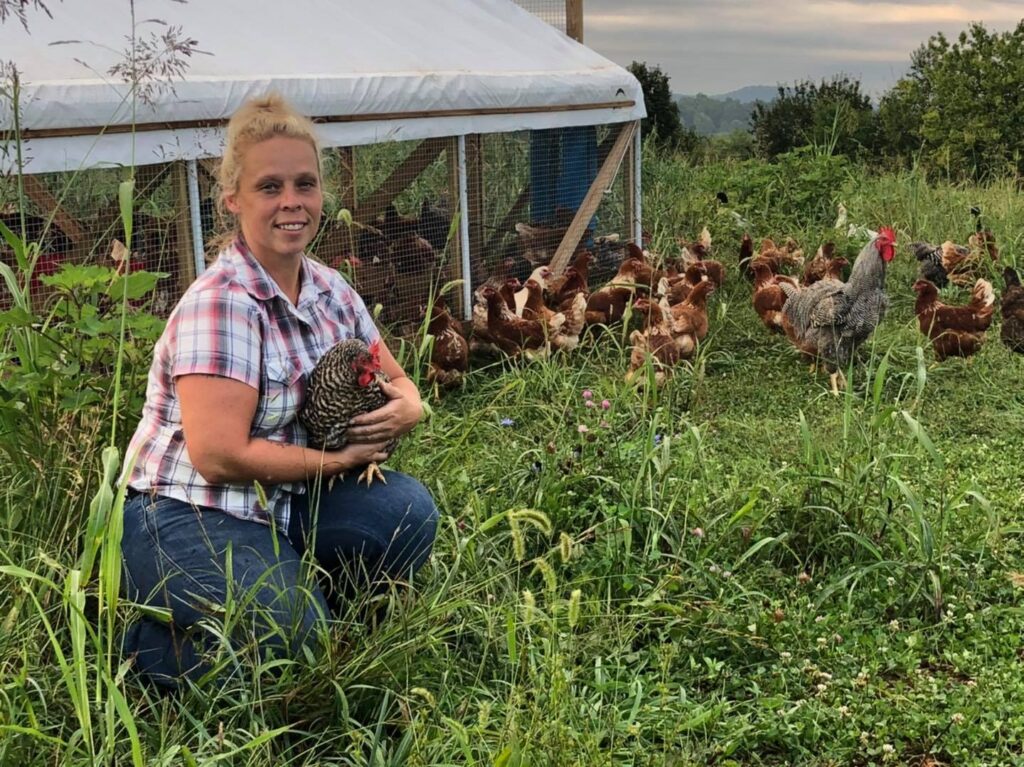
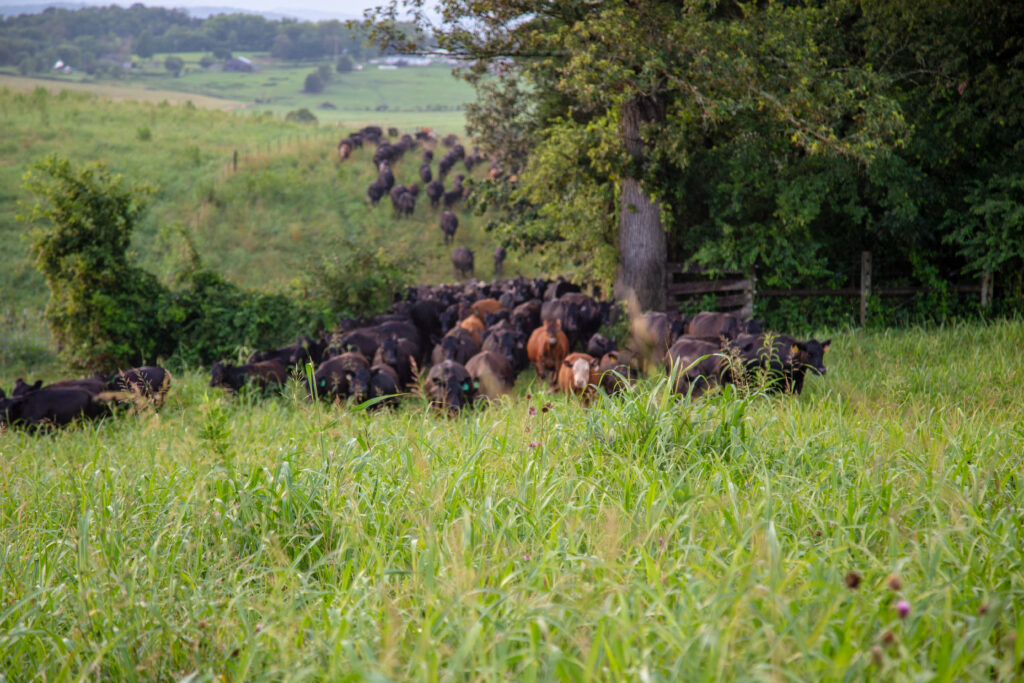
Measurements and Analysis
- Soil Analysis – Composite soil test of planting zones 1 and 2 using Waypoint Analysis S1M. (https://www.waypointanalytical.com/SoilsMedia)
- Browsing/Deterrence – After all grazings, browsing damage of each tree will be categorized as heavy, moderate, or no apparent damage.
- Grazing Behavior – During grazing, we will visually observe animals’ interaction with plantings and deterrents.
- Cost-Reduction - Materials and labor costs throughout the two-year project period will be documented and compared with precedent costs.
- Tree Mortality - Mortality will be tallied after every grazing, total mortality at 2 years will be compared with precedents.
Tree mortality and cost-reductions together will be analyzed to assess cost-effectiveness in terms of cost per surviving tree. Browsing deterrence will be compared between deterrent types. Basic statistical analysis will be used to determine the extent to which differences are statistically significant.
Research
Deterrent Treatments
Our research design entails 8 treatments, or types of browsing deterrents, each set inside a single-strand polywire fence:
- Four live plant deterrents (or “PDs”); to simulate planting into existing low-palatability plants in pastures
- Two cut brush PDs; to simulate replanting and protecting with debris (as in a land-clearing scenario)
- One proprietary plastic tube
- One control (without any additional protection beyond polywire fence)
|
Treatment # |
Type of Deterrent |
Specific Description |
|
Treatment 1 |
Herbaceous, low-palatability PD |
(Verbesina alternifolia, i.e. Wingstem) |
|
Treatment 2 |
Herbaceous, low-palatability PD |
(Assorted Lamiaciae spp, i.e. Mints) |
|
Treatment 3 |
Woody shrub, low-palatability PD |
(Sambucus canadensis, i.e. Elderberry) |
|
Treatment 4 |
Woody thorned shrub PD |
(Rubus allegheniensis, i.e. Common Blackberry) |
|
Treatment 5 |
Cut brush (woody debris) of native thorny species |
(Gleditsia triacanthos, i.e. Honey Locust) |
|
Treatment 6 |
Cut brush (woody debris) of invasive thorny species |
(Pyrus calleryana, i.e. Bradford Pear) |
|
Treatment 7 |
Plastic tree tubes |
(6’ Tree Pro Tree Protectors, Slit Tube Design) |
|
Treatment 8 |
Control |
(Polywire is only deterrent) |
Replications
These 8 treatments are replicated over two other variables, resulting in four replication scenarios, or planting rows.
The first variable is grazing density. By using temporary polywire fencing, two rows will be grazed at 70,000lbs/ac or higher, and the other two rows will be grazed at 30,000lbs/ac or lower.
The second variable is soil condition. Two rows are planted on recently disturbed soil that has poor infiltration and soil structure, and moderate to high organic matter. The other row is planted on undisturbed soil that has excellent infiltration and soil structure, and moderate to high organic matter.
Using these four scenarios to replicate each of the 8 treatments, we result in 32 total plots. A summary of the four scenarios is:
|
|
Poor Soil (Recently Disturbed, Poor Structure/ Infiltration) |
Good Soil (Undisturbed, Excellent Structure/ Infiltration) |
|
High Density (>100,000lbs/ac) |
A x 8 |
C x 8 |
|
Low Density (<10,000lbs/ac) |
B x 8 |
D x 8 |
Tree Plantings
Each plot is planted with ten trees, spaced at one foot on center. Four tree species were chosen, two of high palatability, and two of low palatability. Each plot was planted with:
- Four Lombardy Poplar (high palatability)
- Four Red Mulberry (high palatability)
- One Persimmon (low palatability)
- One Loblolly Pine (low palatability)
Site Preparation
All 32 test plots are located in existing treeless pastureland dominated by cool-season exotic grasses (primarily fescue, annual ryegrass, johnson grass, and bluegrass).
Planting rows were disced in 5’ strips, then subsoiled to ~6” in the center of the row.
A heavy cover crop mixture was broadcast by hand over the area, then worked in with a drag on an ATV. The cover crop is summarized below:
|
|
|
|
|
|
|
|
|
|
|
|
|
|
|
|
|
|
|
|
|
|
|
|
An energized polywire fence is installed on each side of the row to exclude cattle. The step-in fence posts are set at about two and a half feet on either side of the planting row, but are angled outward to create about 3’ on either side of the trees. Posts are distributed along the fenceline with about 25’ between them. (Prior to grazing for research, the rows are fenced off with two strands. During grazing sessions intended for research, the fence will be reduced to a single strand to encourage closer browsing.)
Planting
All trees are planted directly into the soilsoiled line, through the expired cover crop. Trees were planted with a dibble (actually a wrecking bar) or a shovel and watered in. No fertilizer was applied.
Mulching
The ground around the trees was heavily vegetated with the prior season’s cover crop. Simply walking on the cover crop bent the annual plants down, and afterwards they are diminished by the end of their season, creating an effective mulch without bringing in new material.
Grazing
During establishment, the site is grazed as normal, with rows protected by two strands of polywire, set 6’ apart. Grazing sessions for the research project will not occur until late 2023 or early 2024, when trees and deterrents have matured a bit more. At that point we will conduct grazing sessions, documenting each session’s density, timing, and browse damage.
Educational & Outreach Activities
Participation Summary:
04/06/2023: “Advanced Tree Protection in Livestock Operations” Webinar. Virtual presentation targeting southeastern producers and agricultural professionals. Hosted by Appalachian Sustainable Development. https://www.youtube.com/watch?v=KxJN-YUjJOk
09/07/2022: “Trees for Shade, Fodder, and Carbon Revenue” Webinar. Virtual presentation targeting national producers and researchers. Hosted by Working Trees, LLC and in Cooperation with Virginia Tech. https://www.workingtrees.com/blog/working-trees-webinar
Upcoming Outreach Activities:
- Professional Development, Tour Fall 2023
- Online Producer Presentation, Winter 2023
- Pasture Walk, Spring 2024